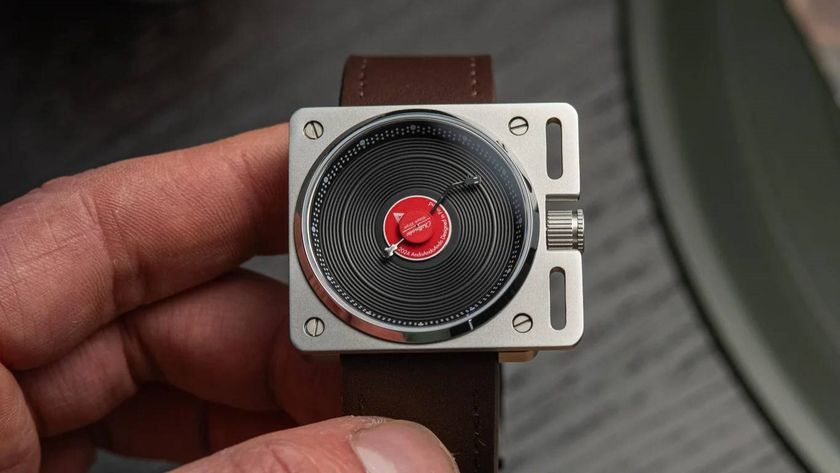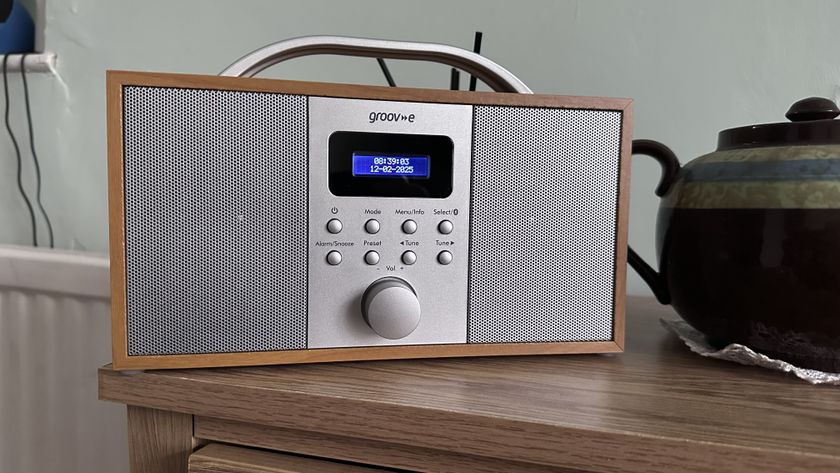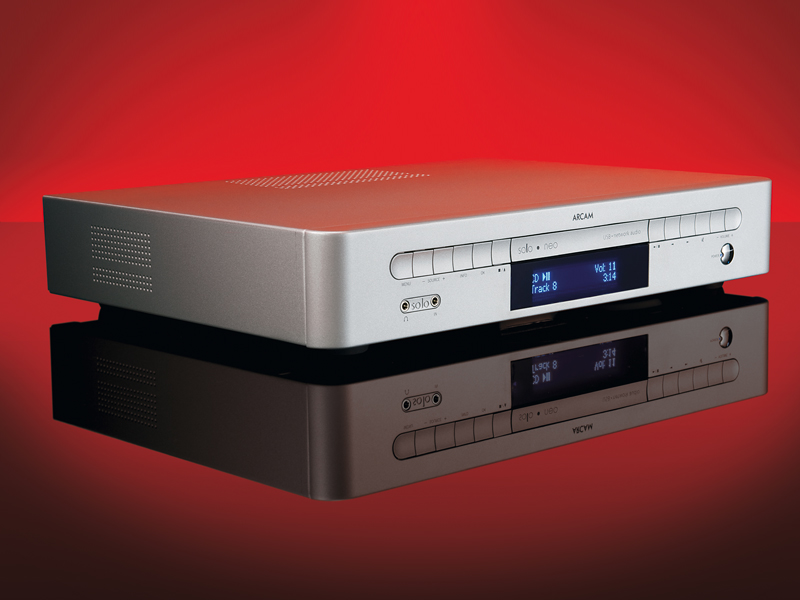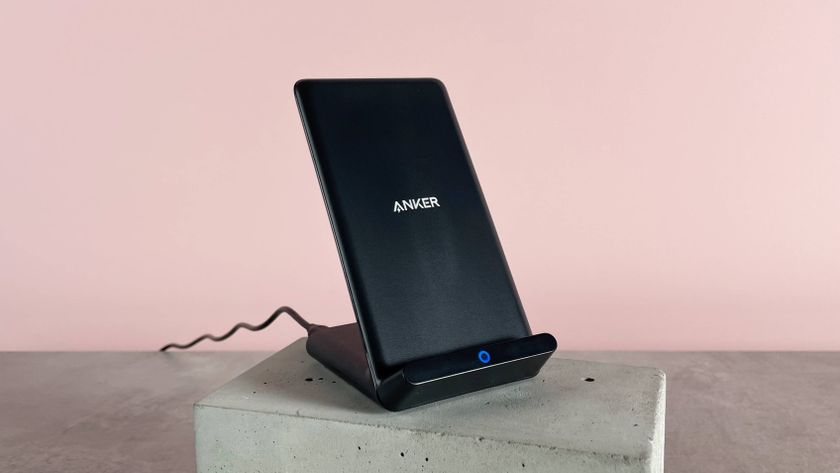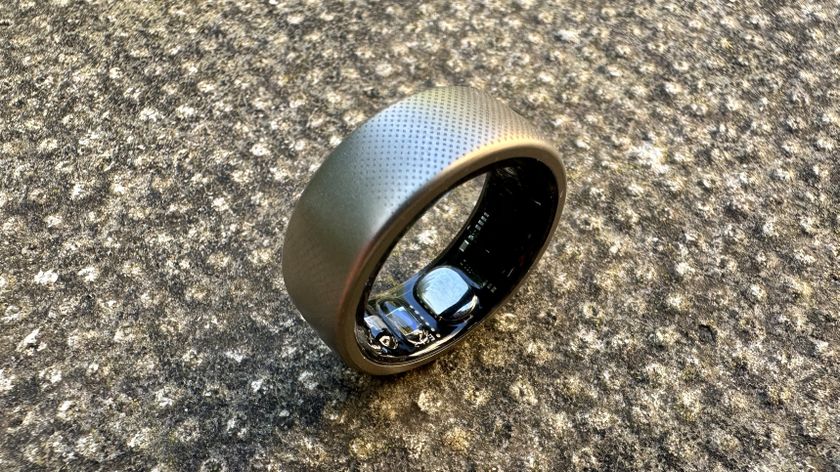TechRadar Verdict
A solid performer, the Neo's interface could be better, but internet performance is a delight
Pros
- +
The industrial design and aesthetics are striking
- +
Good, detailed sound quality
- +
Features
Cons
- -
The UI could be more communicative, when asked to play media beyond its capabilities
Why you can trust TechRadar
The Arcam Solo first saw the light of day around six years ago when most audiophiles had CD as their primary source. That is probably still the case for many but there is increasing demand now for machinery that can handle streamed music, whether it's sourced from the user's home network or from the internet. And streaming ability is what the Arcam Solo Neo brings to the party.
Naturally, being a member of the Solo family, it also offers CD and radio capabilities – the latter now including internet broadcasting – along with its integral pre-amplifier and power amplifier stages.
Furthermore, its USB port can play music from local devices such as memory sticks or hard drives, while the duplex RS232 connector offers playback and control of iPods by way of the optional irDock.
Dot matrix
There is no doubt that Arcam's Solo Neo is a looker. Only available in Silver – because black does not flatter its lines so gracefully – the quadrant-shaped edges on the unit's fascia act in a whole that is greater than the sum of the parts to give the unit a thoroughly and classically stylish appearance. Without them the neo would be plain. With them it looks damn sexy.
In the lower half of the fascia there is a dot matrix display panel, which provides information and feedback to the user. Arcam has been thoughtful here and provided double-height lettering on some menu options that is a considerable help for anyone with less than 20/20 vision.
It is a shame that the eyesight of those past 40 was not given the same consideration when the tiny lettering and icons on the front panel push buttons were applied in grey paint on the silver background, or when the remote control handset was selected (We did spend some time peering through a magnifying glass trying to find the button to open the CD drawer!).
The Solo Neo, considering it starts life as a multiple-source hi-fi system condensed into a single unit, is nonetheless reasonably well equipped, with inputs for external devices and preamp outputs should you need more power than the integral 50-watt design can deliver.
However, Arcam is at pains to insist that if users connect external components to the neo, then they do so with high-quality, well-shielded interconnects. This is so they do not negate the strenuous efforts that the company has put into making its circuitry as quiet as can be by using cables that might act as aerials and introduce electromagnetic interference.
One unusual measure that Arcam employs to counter noise is what it calls Stealth material, which converts high-frequency radiation to heat and is placed above the CD mechanism. The unit features a Wolfson 24-bit Delta Sigma DAC, that operates natively at 44.1 kHz when the CD input is selected, but switches its sample rate to 48kHz when it is used with the DAB, USB and network sources.

The output is, by way of a Toslink connector, used as a further method to keep the overall noise floor down through galvanic isolation of the connection to any external DAC or digital recorder.
The Neo will operate wirelessly, but for the review we did as we always do and ran it through a wired, Cat 5 connection for the added security and consistent performance this brings.
We tested the Neo as a stand-alone player through NEAT Petite SX standmount speakers and Chord Company Epic cables and as a feed to two DACs; the inexpensive Cambridge Audio DacMagic and the rather more expensive Naim Audio DAC feeding tri-amped active Naim DBLs to see how it fared under intense scrutiny.
In recognition of its good looks it was parked on the top shelf of a Quadraspire Sunoko Vent support. Network music sources were a NASrip computer, a NetGear SAN (Storage Area Network) and a VortexBox ripping NAS unit, affording us access to differently stored rips that could furthermore be compared to the original CDs.
Good looking
There is little argument that the Arcam Solo Neo is a strikingly good-looking piece of industrial design, one that is surely destined to be displayed proudly in the home and not tucked away out of view.
The Neo targets buyers who want separates performance – or close to it – from an all-in-one unit and designing such a device brings with it positive and negative considerations: not the least of the negative elements is keeping the earth plane at zero volts when there are several separate power supplies serving different elements on the circuit board, and minimising noise migrating between the various elements of the design.
This goes beyond simply physically separating the relatively clean analogue stages and the 'dirtier' and noisier digital sections. To minimise noise Arcam has introduced multiple power supplies, using a servo technology to ensure that all zero-voltage points remain at zero volts and do not waver sympathetically with varying demands for power.
An easier to spot performance tweak are the dampers wrapped around selected capacitors. Certain capacitors tend to act like empty drinks cans being struck and resonate, affecting their musical performance through microphony: the dampers act like a rubber band around the can and quell those vibrations.
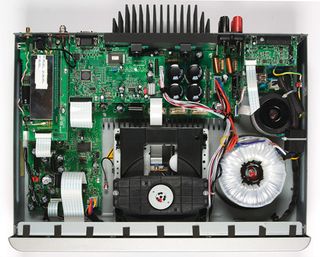
This might seem a minor consideration, but increasingly nowadays, the performance down close to the noise floor, the ability to reveal nuances and low-level detail, is frequently what separates the exceptional hi-fi from that which is merely good.



